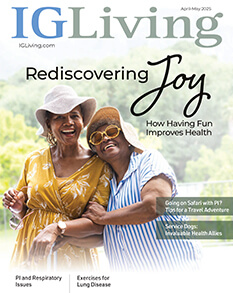News – Article
MMN Quality-of-Life Patient Survey Is Available
The Neuropathy Action Foundation (NAF) has released the results of its first international multifocal motor neuropathy (MMN) quality-of-life patient survey. Of the 214 patients who completed the survey, 71.15 percent are from the U.S., 6.73 percent are from the United Kingdom and the remainder are from 22 other countries.
Key findings from the survey include:
- The majority of respondents (56.52 percent) were diagnosed between the ages of 41 and 65 years.
- More than 67 percent reported it took more than one year to be diagnosed, 44 percent of whom reported it took between two years and three years or longer to be accurately diagnosed.
- The majority of misdiagnoses were reported by neurologists (54.60 percent) and family care providers (20.69 percent).
- 51.96 percent of respondents had conduction block, a characteristic of MMN.
- 91.43 percent receive intravenous immune globulin (IVIG) therapy, and 8.57 percent receive subcutaneous immune globulin (SCIG) therapy. And, if recommended by their neurologist, 81.05 percent would consider switching to SCIG therapy.
- Within one week of the first IG treatment, 36 percent of respondents reported a reduction in symptoms; only 6.67 percent reported IG did not help manage symptoms.
- 50 percent of respondents reported that MMN often or always interferes with employment.
- 56 percent said MMN impacts overall quality of life. Basic tasks such as turning a key in a lock are either difficult or impossible for 53.24 percent; 61.19 percent are either unable or have difficulty buttoning a shirt (although 61.62 percent are able to shop and run errands by themselves); and 58.38 percent have difficulty falling asleep at night, with 77.66 percent reporting daytime sleepiness.
“Early and accurate diagnosis can mean the difference between MMN patients being successfully managed or becoming permanently disabled,” said NAF President Dominick Spatafora. “Timely intervention can make a difference in patients’ lives. The survey results illustrate the complexity of MMN and the impact it can have on peoples’ lives. The good news is that the data also show that treatment clearly helps these individuals.”
A more detailed analysis of the survey findings is available on the NAF website at at www.neuropathyaction.org/downloads/MMN_article%209-26-2016.pdf.


